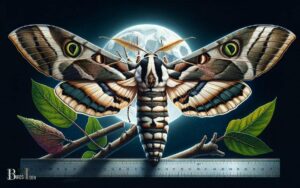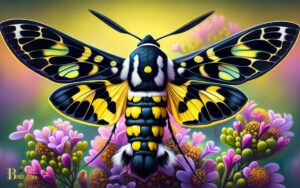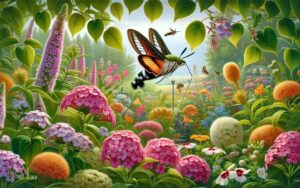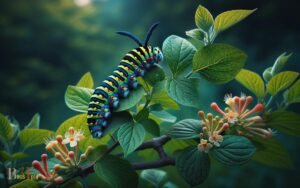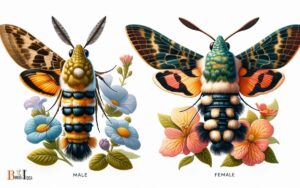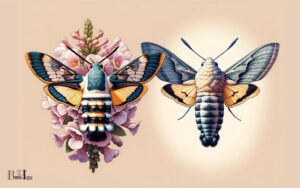What Flowers Do Hummingbird Hawk Moths Like? Find Out!
Hummingbird hawk moths are particularly attracted to flowers with ample nectar, vibrant colors, and tubular shapes. These moths favor flowers such as honeysuckle, buddleia, and red valerian.
To entice these pollinators, planting a variety of nectar-rich flowers that bloom at different times will ensure a consistent food source.
Hummingbird hawk moths (Macroglossum stellatarum) have a clear preference for flowers that facilitate their hovering feeding style and long proboscis.
These preferences include:
Incorporating native plants that naturally attract these moths will enhance the garden’s appeal to them.
Design a hummingbird hawk moth-friendly garden with plants that offer nectar-filled blooms and cater to their feeding habits.
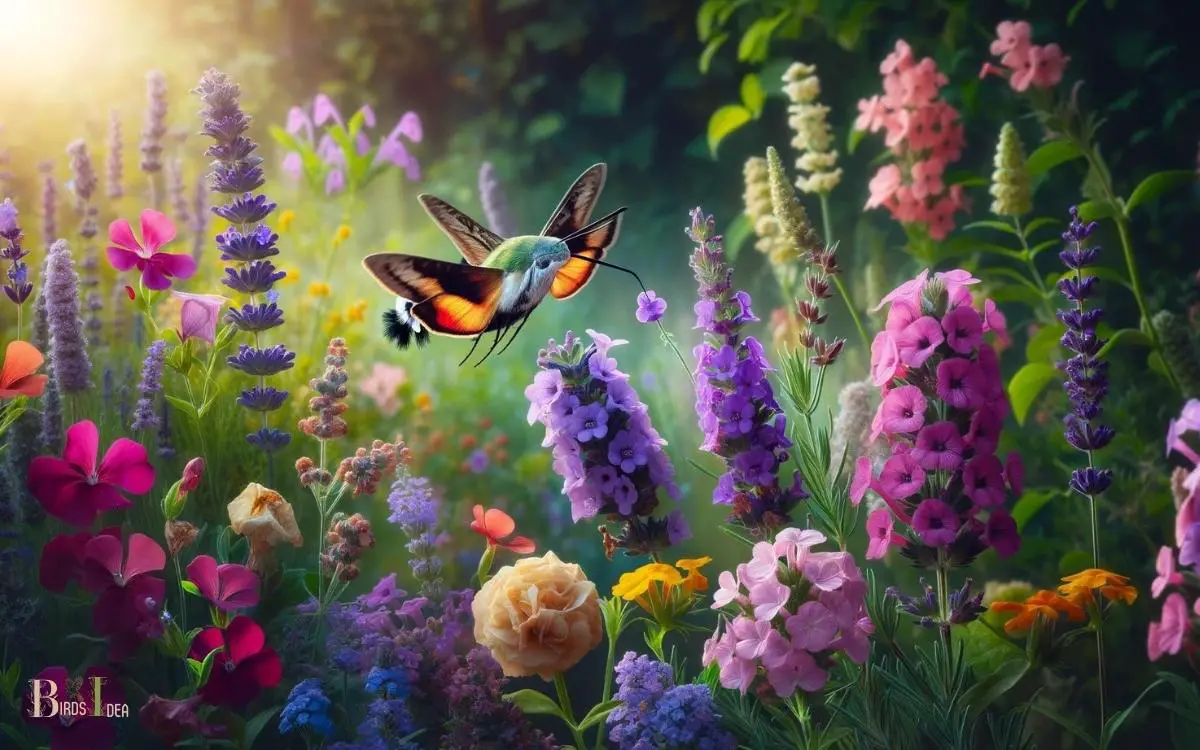
Key Takeaway
6 Best Flowers to Attract Hummingbird Hawk Moths
| Flower Name | Color | Shape | Nectar Level | Blooming Period |
|---|---|---|---|---|
| Honeysuckle | Various | Tubular | High | Late Spring-Summer |
| Buddleia | Purple, Pink | Tubular | High | Summer |
| Red Valerian | Red, Pink | Tubular | High | Spring-Summer |
| Phlox | Various | Tubular | Moderate | Summer-Fall |
| Verbena | Various | Tubular | High | Summer-Fall |
| Petunia | Various | Funnel-like | Moderate | Summer |
Characteristics of Hummingbird Hawk Moths
The agility of Hummingbird Hawk Moths enables them to hover near flowers while feeding on nectar.
These moths have a rapid wingbeat, allowing them to remain suspended in the air while they unfurl their long proboscis to sip nectar from flowers. Their ability to move swiftly and stop abruptly makes them fascinating to observe.
Hummingbird Hawk Moths are often mistaken for hummingbirds due to their similar appearance and behavior, and they’re known for their remarkable flying skills.
Their wings can beat up to 85 times per second, giving them exceptional maneuverability.
This agility allows them to access a wide variety of flowers, making them important pollinators for many plant species. Their remarkable characteristics make them a unique and valuable part of the ecosystem.
Unique Feeding Behavior
Hummingbird Hawk Moths’ unique feeding behavior involves hovering near flowers and unfurling their long proboscis to sip nectar.
This distinctive behavior allows them to feed while hovering in mid-air, much like hummingbirds.
Their long, straw-like proboscis enables them to reach deep into flowers to access nectar, making them efficient pollinators.
This feeding behavior is an adaptation to their fast and agile flying habits, allowing them to access nectar from a wide variety of flower species.
Their ability to hover and feed from a diverse range of flowers makes them valuable pollinators for many plants.
Understanding their feeding behavior provides insight into their role in the ecosystem and can help in creating environments that support their unique feeding habits.
As the Hummingbird Hawk Moths’ feeding behavior is pivotal, their flower preferences play a significant role in their survival and pollination efforts.
Flower Preferences
While foraging for nectar, hummingbird hawk moths prefer a wide array of brightly colored and fragrant flowers.
They’re particularly drawn to tubular-shaped blooms such as honeysuckle, petunias, and fuchsias, which provide easy access to their long proboscis for extracting nectar.
Additionally, they’re known to favor flowers with a high concentration of sucrose in their nectar, such as phlox, verbena, and butterfly bush.
These moths also have a preference for night-blooming flowers like evening primrose and nicotiana, as they’re primarily active during dusk and dawn.
The moths’ flower preferences are also influenced by their need for flowers that produce ample nectar, as they require a substantial energy source due to their fast metabolism and high activity levels.
Color and Shape Attraction
Attracted by the vibrant colors and tubular shapes, hummingbird hawk moths actively seek out specific flowers for their nectar needs.
These moths are particularly drawn to red, pink, and purple flowers, as these hues are easily visible to them, especially in low light.
The tubular shape of the flowers allows the moths to insert their long proboscis to reach the nectar hidden deep within the blooms.
The tubular structure also helps in preventing the nectar from evaporating quickly, ensuring a more reliable food source for the moths.
Additionally, the shape and color of these flowers make them easily distinguishable from other plants, helping the moths efficiently locate their preferred nectar sources.
This color and shape attraction mechanism plays a significant role in the moths’ foraging behavior.
This preference for specific flower colors and shapes leads to the next topic of ‘nectar-rich blooms’.
Nectar-Rich Blooms
Hummingbird hawk moths are attracted to nectar-rich blooms, making it essential to identify ideal nectar sources for these remarkable creatures.
Understanding their flower color preferences can also be crucial in creating a welcoming environment for them.
Additionally, finding blooms that are available in all seasons can help ensure a consistent food source for hummingbird hawk moths.
Ideal Nectar Sources
The hummingbird hawk moth prefers nectar-rich blooms that offer ample sustenance for their energetic feeding habits.
When it comes to ideal nectar sources for attracting these fascinating creatures, gardeners should consider planting a variety of flowers that are known to be particularly attractive to hummingbird hawk moths.
Some of the ideal nectar sources for hummingbird hawk moths include:
- Lavender: This fragrant flower not only attracts hummingbird hawk moths but also adds a delightful aroma to the garden.
- Bee Balm: With its vibrant red, pink, or purple blooms, bee balm is a favorite of hummingbird hawk moths.
- Verbena: This low-maintenance plant produces clusters of small, nectar-rich flowers that hummingbird hawk moths find irresistible.
Native Plant Species
Hummingbird hawk moths are attracted to a variety of native plant species for their nectar. They particularly favor plants like honeysuckle, bee balm, red valerian, and phlox.
These native species not only provide a rich source of nectar but also offer a familiar and natural environment for the moths.
By planting these native species in their gardens, individuals can create an inviting habitat for hummingbird hawk moths.
Additionally, native plant species are well-suited to the local climate and soil conditions, making them easier to maintain and sustain.
Understanding the specific native plants that attract hummingbird hawk moths is crucial for creating a thriving garden that supports their presence.
This understanding of native plant species sets the stage for exploring the seasonal blooming patterns.
Seasonal Blooming Patterns
Hummingbird hawk moths have specific preferences for spring flowers that provide ample nectar for their sustenance.
Understanding the seasonal blooming patterns of these flowers can help attract these fascinating creatures to gardens and yards.
Additionally, knowing the summer nectar sources favored by the hummingbird hawk moths can aid in creating a vibrant and diverse environment for them to thrive.
Spring Flower Preferences
Spring’s blooming patterns influence the hummingbird hawk moth’s flower preferences. As the season transitions from winter to spring, certain flowers begin to bloom and attract the hummingbird hawk moths due to their nectar-rich and easily accessible qualities.
During spring, the hummingbird hawk moth tends to prefer:
- Lilacs: These fragrant flowers are known to attract hummingbird hawk moths with their sweet nectar and vibrant colors.
- Bluebells: The tubular shape of bluebell flowers makes it easier for the moths to access the nectar, making them a preferred choice during the spring season.
- Foxgloves: With their tall spires of tubular blooms, foxgloves are a favorite of the hummingbird hawk moth, providing ample nectar for these insects during their springtime visits.
These flowers play a crucial role in providing sustenance for the hummingbird hawk moths during the spring months.
Summer Nectar Sources
The transition from spring to summer influences the availability of nectar sources for the hummingbird hawk moths, impacting their foraging patterns and flower preferences.
During the summer months, certain flowers bloom and provide rich nectar sources that attract hummingbird hawk moths.
Understanding the seasonal blooming patterns of these nectar sources can help gardeners and nature enthusiasts create moth-friendly environments.
| Flower | Blooming Period | Nectar Production |
|---|---|---|
| Butterfly Bush | Early to late summer | High |
| Bee Balm | Mid to late summer | High |
| Lantana | All summer | High |
| Phlox | Early to mid-summer | Moderate |
These summer-blooming flowers serve as vital nectar sources for hummingbird hawk moths, supporting their energy needs during this active period.
Do Hummingbird Hawk Moths Only Prefer Night Blooming Flowers?
Yes, the night blooming flower attracts hummingbird moths. However, these moths are also known to feed on nectar from a variety of flowers during both the day and night. So while they may have a preference for night blooming flowers, they are not limited to them.
Garden Design Tips
Gardeners can create an inviting habitat for hummingbird hawk moths by strategically planting nectar-rich flowers in sunny, sheltered locations.
To design a garden that attracts these unique creatures, consider the following tips:
- Choose a variety of flowers that bloom at different times throughout the season to provide a continuous nectar source.
- Incorporate long-tubed flowers, such as honeysuckle and salvia, to accommodate the long proboscis of the hummingbird hawk moth.
- Plant flowers in clusters or drifts to create visible patches of color and make it easier for the moths to locate the nectar sources.
Conclusion
Hummingbird hawk moths are unique creatures with a preference for nectar-rich blooms such as lavender, lilac, and honeysuckle.
Their incredible ability to mimic the behavior of both hummingbirds and moths makes them a fascinating sight in any garden.
By planting a variety of native plants with different blooming periods, gardeners can attract these anachronistic beauties and create a haven for both wildlife and themselves.
Happy gardening!

